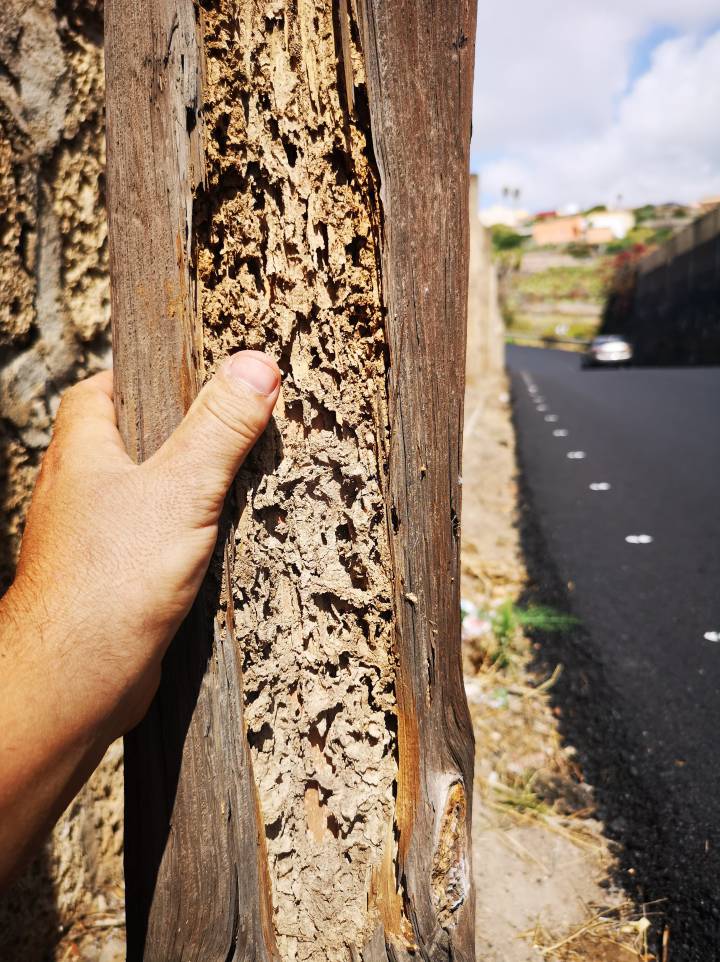First of all, my apologies for the alliteration and the ‘Daily Mail’ style headline; I just couldn’t resist it. Sadly, on this occasion, this is not “fake news”.
These invaders from the USA (Reticulitermes Flavipipes) were first reported in Tenerife in 2010. Commonly described as “an efficient and economic wood destroying insect” in the United States.
These pests feed on all kinds of cellulose material, such as the wood used in buildings, paper, books and cotton. There can be as many as 20,000 to 5 million workers in a colony, with the queen laying 5,000 to 10,000 eggs each day.
Similar to ants and cockroaches, termites are a social species and share many of the tasks that are necessary for community survival. Their division of work is based on a caste system of workers, soldiers and breeders, which is remarkably efficient. These pests are a great problem in many countries, since termites can go undetected for a lengthy period of time.
Their presence in structures can go unnoticed, since the timber will look structurally sound from the outside, but the inside of the structure will have been reduced to something resembling a honeycomb. Structural timbers and floorboards are most at risk from termite damage and termites are considered to be a serious economic pest.
In Tenerife, pest control services were alerted and they successfully eradicated these pests from a residential property, or so it was thought. The problem was once again reported in 2017, but the news was not widely reported, because residents were concerned that it would affect the value of their properties. Controlling and destroying termite colonies is not easy, and is expensive. Popular methods range from chemical treatments, heat, freezing, electrocution and microwave irradiation.
A recent report has since shown that this infestation in Tenerife is a serious one and now covers an area of around 60 kilometres, with suggestions that they could now have spread to anywhere on the island. In parts of Tenerife, such as La Laguna, there are many buildings of considerable cultural value that are mainly built from timber; there are also plant nurseries in the area. This, together with high temperatures and high levels of humidity, creates ideal conditions for termites to thrive throughout the year.
Tenerife is not the only place to suffer from the termite invasion. Cities, such as Paris and Florence have been tackling the problem for many years. Other Canary Islands are not immune either, since one of the reasons for the ten-year delay in reopening the lighthouse in the south of Gran Canaria is said to be damage caused by termites.
It is not all bad news, since termites are said to play a critical role in the decomposition of organic material on forest floors, for instance, without which forests would be in trouble. Sadly, this will not be of much comfort to communities in Tenerife and other places who are having to deal with the damage. Hopefully, local municipalities, as well as the island government, will step in to help eradicate this serious problem and to assist those who have been so badly affected by this hidden invader.
If you enjoyed this article, take a look at my websites: http://barriemahoney.com and http://thecanaryislander.com or read my latest book, ‘Letters from the Canary Islands’ and Spain’ (ISBN: 9780995602731). Available in paperback from Amazon, Waterstones and all good bookshops, as well as Kindle editions.
Join me on Facebook: @barrie.mahoney
© Barrie Mahoney





